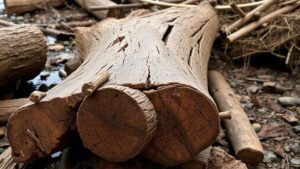Exploring Forgotten Hunting Cabin Sites for Frontier Relic Discoveries
Exploring Forgotten Hunting Cabin Sites for Frontier Relic Discoveries
Hunting cabins, often overlooked remnants of North Americas expansive frontier, serve as pivotal sites for the study of early habitation, resource use, and cultural practices. These structures not only tell stories of individual pioneers but also reflect the broader socio-economic and environmental transformations that occurred throughout the 19th century. This article aims to explore the significance of forgotten hunting cabin sites as sources of frontier relics, highlighting methodologies for their discovery, examples of significant finds, and implications for historical research.
The Historical Context of Hunting Cabins
Hunting cabins emerged during the westward expansion of the United States, particularly between 1800 and 1900. e structures served dual purposes: as temporary shelters for hunters and as base camps for larger expeditions. The significance of these cabins is rooted in their role as markers of human interaction with the wilderness. For example, the hunting cabins of the Adirondack region, dating back to the early 1800s, are notable for their distinctive architectural styles and the socio-economic status of their builders.
Methodologies for Discovering Hunting Cabin Sites
Locating forgotten hunting cabin sites requires a combination of historical research, field surveys, and modern technology:
- Archival Research: Researchers often begin with historical maps, journals, and land records. U.S. Geological Survey and the Bureau of Land Management provide valuable data on land use and ownership changes over time.
- Field Surveys: Conducting on-site investigations can reveal structural remnants and scattered artifacts. Techniques such as soil sampling and landscape analysis are instrumental in this phase.
- Remote Sensing: Technologies such as LiDAR (Light Detection and Ranging) can identify hidden structures beneath dense foliage or terrain. A study in the Cascade Range demonstrated how LiDAR revealed the remnants of multiple hunting camps that previously eluded discovery.
Significant Frontier Relic Discoveries
Excavations at hunting cabin sites have yielded numerous artifacts that provide insights into frontier life. One notable example is the excavation of a hunting cabin in the Allegheny National Forest. Artifacts discovered included:
- Firearms and hunting tools, which indicated the reliance on personal hunting for sustenance.
- Personal items such as buttons and harmonica pieces, suggesting the cultural practices and leisure activities of early settlers.
- Cooking implements and animal remains that revealed dietary habits and resource procurement methods.
Also, a study of hunting cabins in the Montana Territory highlighted the transition from indigenous hunting practices to Euro-American settler strategies, illustrating significant cultural exchange and adaptation.
Implications for Historical Research
The exploration of forgotten hunting cabin sites offers several implications for understanding early settlement patterns and environmental interactions:
- Understanding Resource Use: Analysis of artifacts can reveal patterns of resource utilization and habitat modifications driven by human activities.
- Cultural Preservation: The preservation of these sites and the accompanying artifacts is crucial for maintaining cultural heritage and informing contemporary discussions about land use.
Conclusions and Future Directions
Exploring forgotten hunting cabin sites not only uncovers physical relics of the past but also enriches our understanding of the cultural narratives woven into the fabric of frontier life. Future research should utilize advanced technologies and interdisciplinary approaches to further uncover these narratives, while also advocating for the protection and preservation of these invaluable sites. As the interest in frontier history grows, so too must the commitment to preserving the stories embedded in these forgotten hunting cabins.
In summary, forgotten hunting cabin sites are more than mere structures; they stand as relics of a bygone era that continue to shape our understanding of historical human interactions with the environment. By employing a combination of historical inquiry and modern technology, researchers can uncover not only relics but also the intricate narratives of resilience, resourcefulness, and cultural adaptation.


